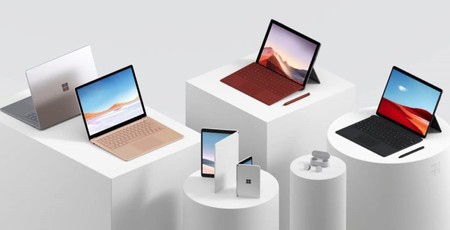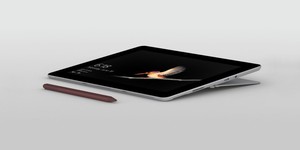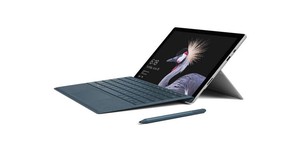
Microsoft surprised crowds late last night with a press event that unveiled what chief product officer Panos Panay describes as 'our broadest Surface line-up ever' - including a double-display tablet, a folding Android smartphone, and its first Surface device to feature an AMD processor.
'When we started Surface, we had a vision to remove the conflict between the tablet and laptop,' Microsoft's chief product officer Panos Panay told attendees at the launch event late last night, apparently forgetting - as has everyone else - that the company's Surface line-up began life as an interactive electronic table. What started as an effort to create the two-in-one evolved into a full line of products that are more versatile, more adaptable and more personal. We know that to be your best, you need devices that adapt to you to help you accomplish your goals. These new products are about empowering you to be your most productive, and your most creative.'
The list of said new products is undeniably impressive, if not a little scattershot. The headline product was, of course, the Surface Laptop 3, Microsoft's third-generation own-brand portable. Based on Intel's tenth-generation 'Ice Lake' Core processor family, the Surface Laptop 3 comes with a 13.5" display, all-metal finish, and boasts the claim of all-day battery life. What came as a surprise, though, was the presence of a second Surface Laptop 3 boasting a larger 15" display and, for the first time, an AMD Ryzen processor under the hood. Not just any AMD Ryzen, either, but a semi-custom design the company is calling the AMD Ryzen Surface Edition.
Also unveiled was the Surface Pro 7 and Surface Pro X, the former upgrading again to a 10th-generation Intel Core processor and featuring USB Type-C connectivity while the latter slims the design down and switches things up with a semi-custom Qualcomm processor dubbed the Microsoft SQ1 - a return to Arm for the Surface family after the failure of the Surface RT range, aided by the Windows on Arm compatibility layer.
While that would have been enough for your usual Surface launch event, Microsoft had a couple of other surprises to show off. Surface Neo is described by Panay as 'a new category of dual-screen devices designed to help people get more done on smaller, more mobile form factors,' and is - finally - the dual-screen Windows tablet the company was rumoured to be launching in 2011 before cancelling outright in April 2010. Interestingly, it's also the only one in the range to make use of Intel's Foveros 3D chip packaging technology, boasting a hybrid chip design packaging power-efficient Tremont cores with a high-performance Sunny Cove core to balance battery life and performance. The tablet will, meanwhile, run Windows 10X, a new variant of Microsoft's flagship operating system designed for dual-screen portables.
The Surface Duo, meanwhile, is a folding smartphone with two inwards-facing displays which can combine into a single 8.3" display - and it runs Android, finally putting to bed any hopes or fears that Microsoft may be looking to bring back Windows Phone. While lacking the external display and seamless internal display of the troubled Samsung Galaxy Fold, the hardware benefits from the simplicity of having two non-flexible displays - but will rely heavily on third-party support for its twin displays in order to make a success of its launch.
More information on the launches, plus new Office features, can be found on Panay's blog post.

MSI MPG Velox 100R Chassis Review
October 14 2021 | 15:04








Want to comment? Please log in.